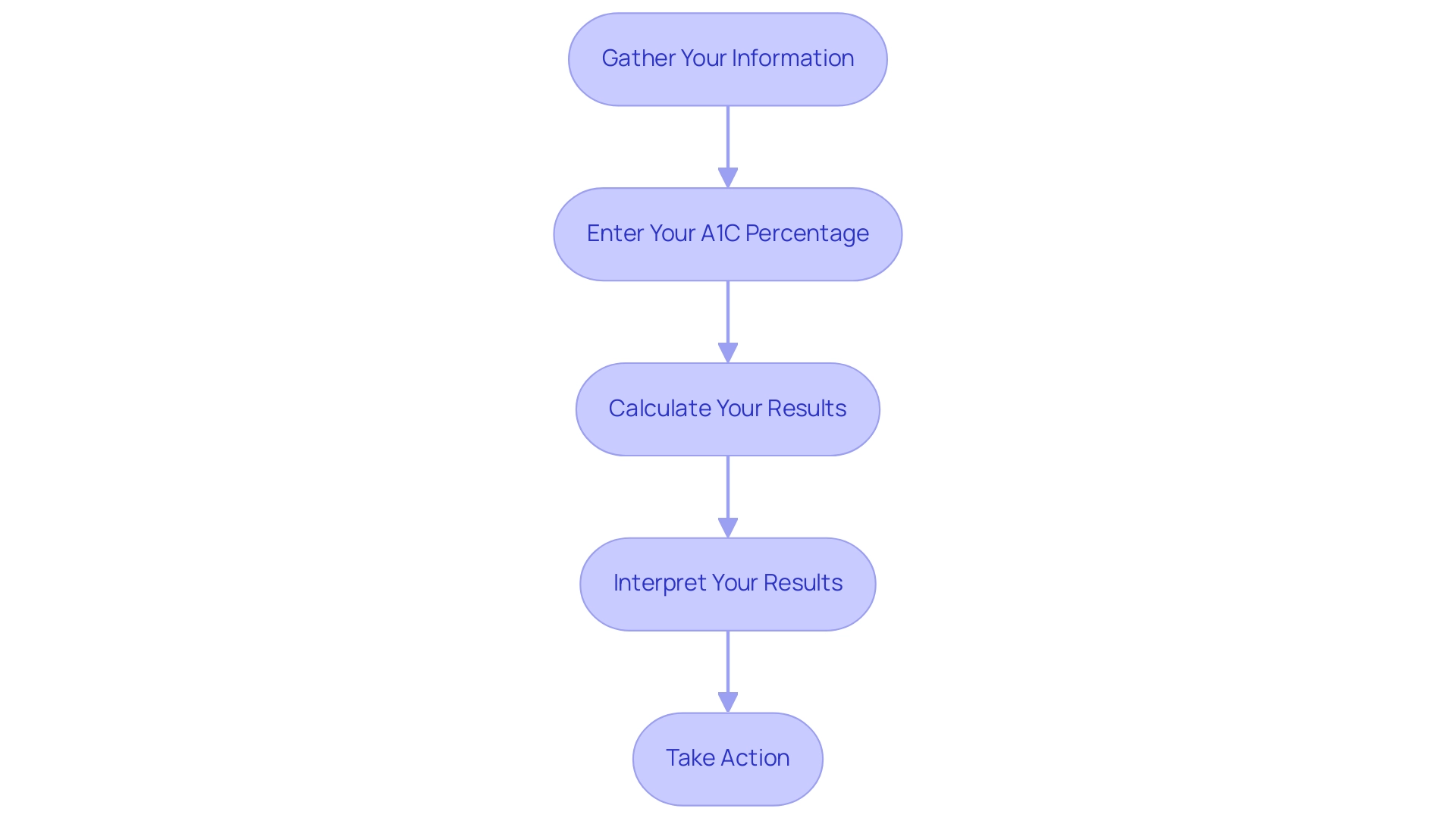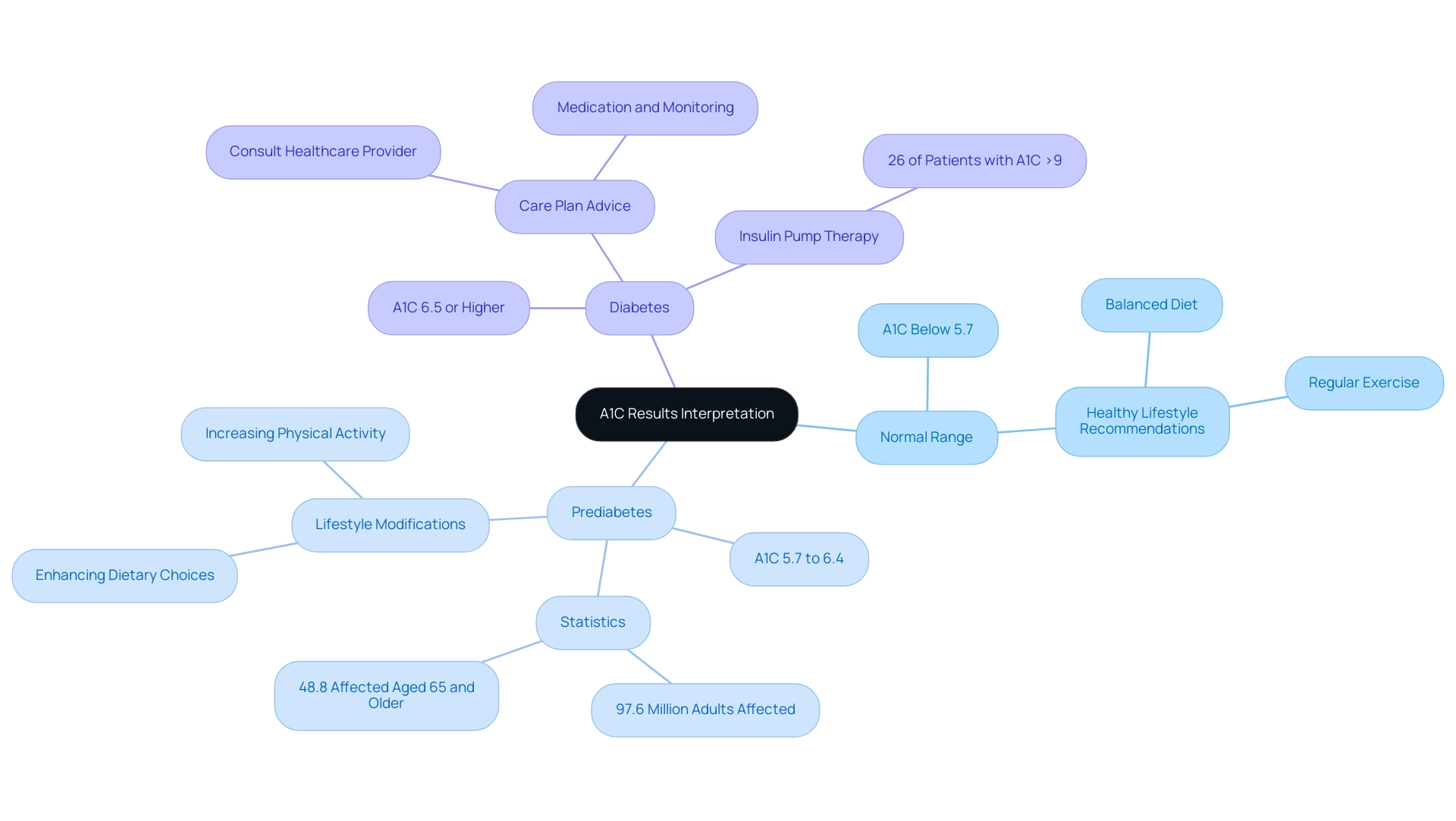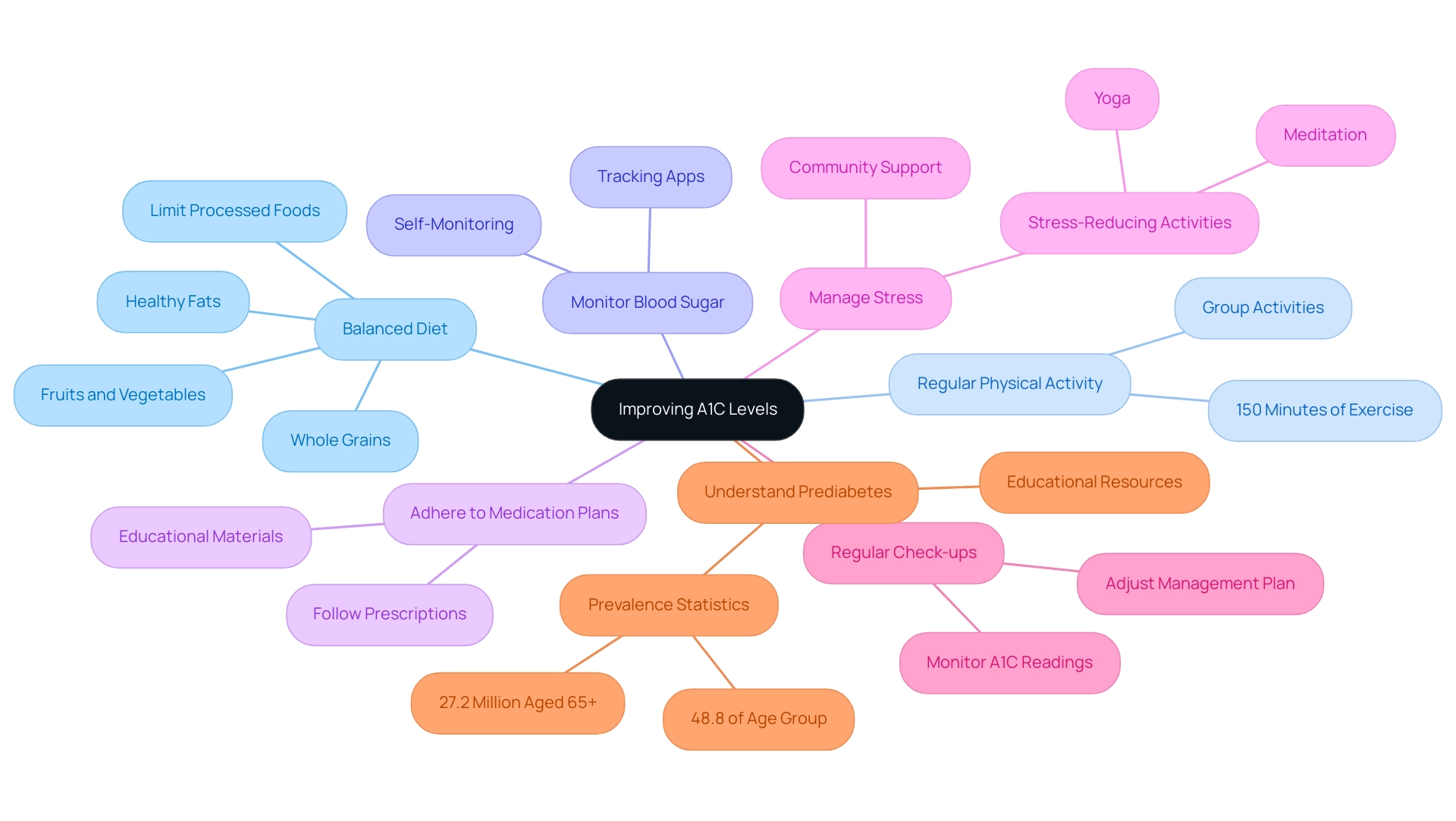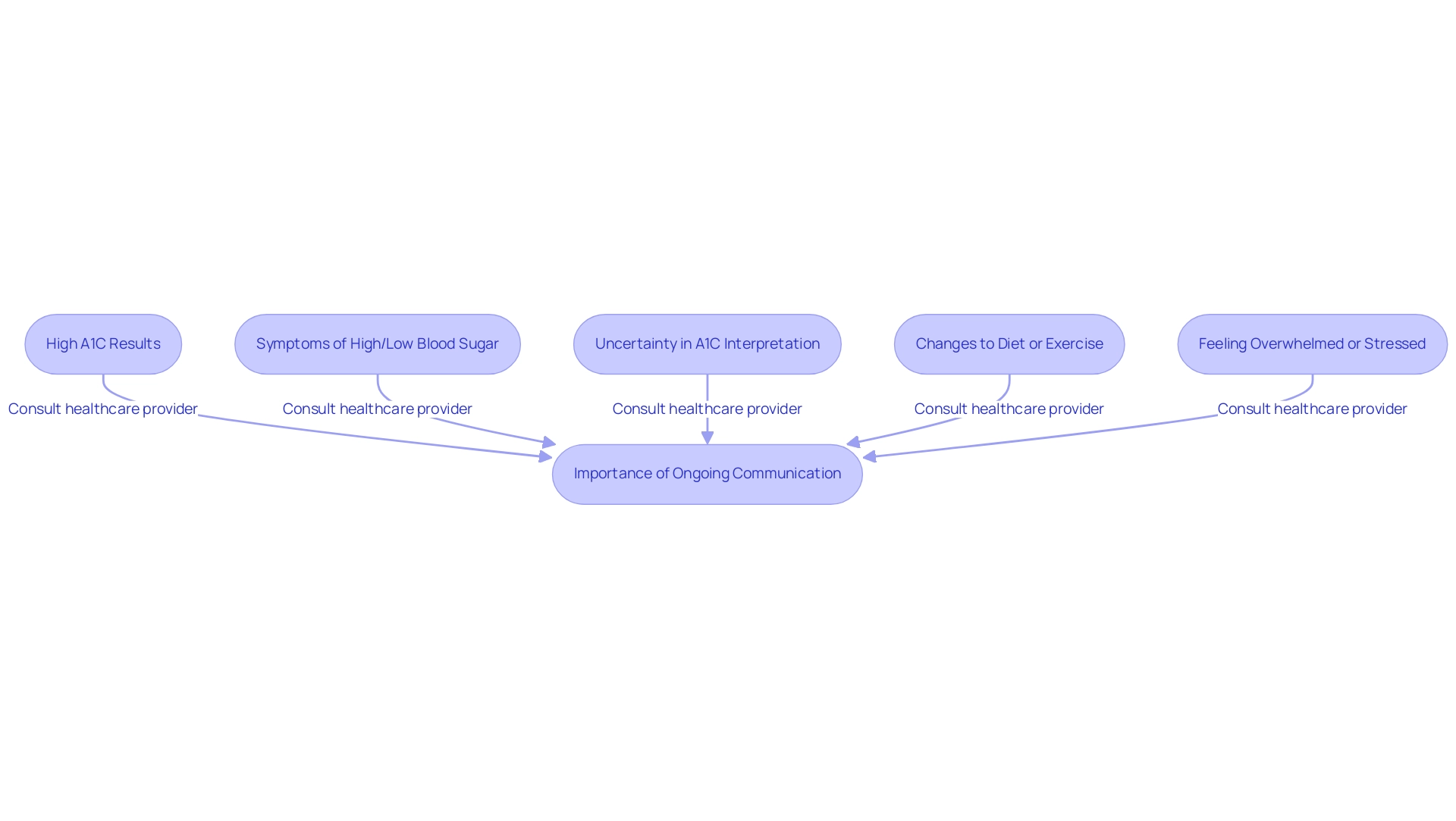Introduction
Navigating the complexities of diabetes management requires a solid understanding of key metrics, particularly the A1C test. This essential tool measures average blood glucose levels over the preceding months, offering crucial insights into an individual's overall blood sugar control. As diabetes continues to pose significant health risks, with millions affected worldwide, grasping the implications of A1C results becomes vital for effective treatment and prevention strategies.
From recognizing the thresholds that indicate normalcy, prediabetes, or diabetes, to implementing lifestyle changes based on these results, this article provides a comprehensive overview of A1C testing and its critical role in managing diabetes. With the right knowledge and resources, individuals can take proactive steps towards better health and improved quality of life.
Understanding A1C: What It Is and Why It Matters
Welcome to T2DSolutions, a brand new site and your comprehensive resource hub for Type 2 and Type 3 conditions education and community support. As you navigate your diabetes journey, using an A1C calculator to understand the A1C test is vital. This test assesses average blood glucose concentrations over the past two to three months, offering a clear snapshot of overall blood sugar control, expressed as a percentage.
For instance, an A1C of 7% indicates that blood glucose readings have consistently been elevated beyond the normal range. Understanding A1C results is essential, and an A1C calculator can help directly inform the risk for diabetes-related complications. Regular monitoring of A1C values with an A1C calculator can facilitate informed treatment decisions and prompt necessary lifestyle adjustments.
Typically, an A1C level below 5.7% is classified as normal, while levels from 5.7% to 6.4% imply prediabetes, and those at 6.5% or above signify the existence of the condition. In 2017–2018, the yearly occurrence of identified cases of the condition among young individuals was estimated at:
- 18,200 for type 1
- 5,300 for type 2
This emphasizes the urgent requirement for early and effective treatment. Additionally, this condition was mentioned as a cause of death in a total of 399,401 certificates in 2021, emphasizing the seriousness of its management and the role of A1C testing in preventing complications.
As pointed out by Amy Richter, a Medical Reviewer with a Master's degree in Nutrition Diagnostics, the A1C calculator plays a crucial role in effectively managing blood sugar levels. This is further illustrated by the case study titled 'ABCs of Diabetes Management,' which reveals that:
- Only 11.1% of adults met all criteria for A1C, blood pressure, cholesterol, and smoking
- 36.8% met less stringent goals
At&T Solutions, we are dedicated to offering you the information and assistance required to manage your condition effectively.
Subscribe now to stay up to date and receive emails when new content is published!

Step-by-Step Guide to Using the A1C Calculator
Welcome to T2DSolutions, a brand new site devoted to blood sugar control, where we offer comprehensive resources for Type 2 and Type 3 glucose education and community support. Utilizing a A1C calculator entails a straightforward procedure that can greatly assist in managing blood sugar levels, particularly for those recently diagnosed. At T2D Solutions, we guide you through the following steps to ensure accurate results:
-
Gather Your Information:
Start by collecting your most recent A1C test result, typically expressed as a percentage. If accessible, also acquire your average blood glucose measurement to improve the precision of your calculations. To access a reliable A1C calculator, visit T2DSolutions where you can find trustworthy online A1C calculators.
Many reputable diabetes organizations provide free tools on our site, ensuring you have reliable resources at your fingertips. -
Enter Your A1C Percentage:
Enter your A1C percentage into the designated field on the A1C calculator. If you have access to your average blood glucose measurement, input that value as well to receive a comprehensive overview. -
Calculate Your Results with the A1C Calculator:
After entering your data, click the 'Calculate' button. The calculator will provide either your average blood glucose level (if you input your A1C) or your A1C percentage (if you entered your average glucose). -
Interpret Your Results:
Carefully review the output generated by the A1C calculator. Grasping the importance of your A1C percentage is essential for efficient control of this condition. If your result exceeds the target range set by your healthcare provider, consider discussing adjustments to your care plan. Recent advancements in blood sugar management technologies, such as continuous glucose monitoring systems, have enhanced accuracy and patient satisfaction, making it easier to manage your A1C values effectively. -
Take Action:
Based on your results, implement any necessary lifestyle changes or treatment adjustments as advised by your healthcare team. Consistent observation of your A1C levels and utilizing an A1C calculator can assist you in tracking your progress and making informed choices concerning your health. As Chris Schott, a Senior Analyst at J.P. Morgan, observes, the latest generations of medications for blood sugar regulation can result in considerable weight loss, a crucial element in overall care.
Remember, dietary oversight is also essential, with forecasts suggesting a possible reduction in food consumption in North America by 2030, which may affect care strategies for diabetes-related conditions.
Don't forget to subscribe to stay informed on new content and resources available at T2DSolutions!

Interpreting Your A1C Results
Welcome to T2DSolutions, your comprehensive resource for Type 2 and Type 3 blood sugar control. As you progress through your journey with blood sugar issues, utilizing an A1C calculator to comprehend your A1C results is essential for effective oversight. The following ranges provide important insights into your blood sugar control:
-
Normal Range (Below 5.7%): This measurement indicates effective blood sugar management. To maintain this status, it is essential to continue following a healthy lifestyle, which includes a balanced diet and regular exercise.
-
Prediabetes (5.7% to 6.4%): This range signifies a heightened risk of developing this condition. It is a pivotal time to adopt lifestyle modifications, such as enhancing dietary choices and increasing physical activity levels. According to recent findings, an estimated 97.6 million adults in the U.S. are affected by prediabetes, emphasizing the need for early intervention strategies to prevent progression to the condition. Among those aged 65 and older, the prevalence is particularly concerning, with nearly 48.8% affected, underscoring the public health implications of this condition.
-
Diabetes (6.5% or Higher): A result in this range confirms the presence of diabetes. It is advisable to consult your healthcare provider to create a customized care plan. This may involve medication, dietary adjustments, and consistent monitoring of your blood sugar. Significantly, 26% of individuals with A1C levels exceeding 9% use insulin pump therapy, emphasizing a strategy for those with elevated A1C levels.
Comprehending these A1C ranges not only assists in taking proactive measures toward controlling your condition but also plays a vital role in decreasing the risk of complications linked to the illness, which can be effectively monitored using an A1C calculator. Indeed, the repercussions of inadequate blood sugar control can be serious, as demonstrated by the 202,000 emergency department visits in 2020 due to hypoglycemia, amounting to 8.6 per 1,000 adults with the condition. As Shimazaki observes, 'The combination of A1C and OGTT enables more precise prediction of progression to the condition in those with glucose intolerance,' reinforcing the importance of comprehensive monitoring in care.
As T2DSolutions is just getting started, we invite you to subscribe for updates on new content and resources that will be available to support your health journey. Stay tuned for more insights and tools as we develop into a vital community support hub.

Tips for Improving Your A1C Levels
To effectively improve A1C levels and manage the condition, T2DSolutions recommends the following strategies, emphasizing the importance of education and community support for individuals dealing with Type 2 and Type 3 conditions:
-
Maintain a Balanced Diet: Prioritize a diet abundant in whole grains, lean proteins, healthy fats, and a wide variety of fruits and vegetables. It is crucial to limit processed foods and sugars, as research shows that dietary choices significantly impact blood glucose management. Notably, the evidence regarding the ideal amount of total fat intake for people with diabetes is inconclusive; hence, focusing on the quality of fat consumed is more important than the quantity. The IOM recommends an acceptable macronutrient distribution range for total fat of 20–35% of energy, emphasizing the importance of fat quality in supporting metabolic goals and reducing cardiovascular disease risk.
-
Regular Physical Activity: Strive for a minimum of 150 minutes of moderate-intensity exercise each week. Participating in activities like walking, swimming, or cycling can significantly assist in managing blood sugar and enhancing overall health. T2DSolutions offers community support programs that encourage group activities and provide motivation for maintaining an active lifestyle.
-
Monitor Your Blood Sugar: Implement regular self-monitoring of blood glucose readings. This practice enables individuals to observe how dietary choices, physical activity, and medications influence their blood sugar, facilitating better management of diabetes. T2DSolutions provides comprehensive tools, including blood sugar tracking apps and resources, to assist with effective monitoring.
-
Adhere to Medication Plans: Follow prescribed medication regimens as directed by your healthcare provider. Proper adherence to medication can be instrumental in maintaining optimal blood glucose readings, contributing to improved A1C outcomes. T2DSolutions offers educational materials that help patients understand their medications and the importance of adherence.
-
Manage Stress: Acknowledge that high stress can negatively impact blood sugar readings. Incorporate stress-reducing activities into your routine, such as yoga, meditation, or engaging in enjoyable hobbies, to promote better metabolic control. T2DSolutions also offers community support to assist individuals in discovering stress relief techniques suited to their needs, including workshops and online resources.
-
Regular Check-ups: Maintain consistent communication with your healthcare provider to monitor A1C readings with an A1C calculator and adjust your management plan as necessary. Regular consultations are vital for personalized care and timely adjustments that align with your individual health goals. T2DSolutions encourages patients to utilize their resources for preparing for these check-ups effectively.
-
Understand the Prevalence of Prediabetes: With 27.2 million people aged 65 years or older having prediabetes, which constitutes 48.8% of that age group, it is crucial to be proactive in managing A1C levels. This statistic highlights the significance of implementing effective strategies to prevent the advancement of the condition. T2DSolutions is committed to providing education and resources, including informational webinars and community outreach, to help individuals understand and combat the risks associated with prediabetes.

When to Consult Your Healthcare Provider
As T2DSolutions prepares to launch as a comprehensive resource hub for Type 2 and Type 3 blood sugar education and community support, it is crucial to consult your healthcare provider under several specific circumstances related to condition oversight:
- If your A1C results consistently exceed your target range, which signifies inadequate blood sugar control, it is essential to seek professional advice. Notably, nearly 39% of individuals with diabetes do not keep their condition under control, which is defined as an A1C measurement below 7, as indicated by an A1C calculator.
- When you observe symptoms of high or low blood sugar—such as extreme fatigue, dizziness, or unusual thirst—it is advisable to reach out for guidance to mitigate potential complications.
- If you find yourself uncertain about interpreting your A1C results or require assistance in modifying your care plan, utilizing an A1C calculator and consulting your healthcare provider can provide clarity and direction.
- Prior to making substantial alterations to your diet or exercise regimen, particularly if you are on medication, it is wise to discuss these changes with your healthcare provider to avoid adverse effects.
- Should you feel overwhelmed or stressed about managing your condition, remember that emotional support is a vital component of effective control, and your healthcare team can offer valuable resources and counseling.
Moreover, ongoing communication with your healthcare team is vital for achieving optimal control of your condition and preventing long-term complications. Insights from the Diabetes Collaborative Registry indicate that patient-provider communication can significantly improve A1C levels, reinforcing the importance of proactive engagement with healthcare professionals regarding your condition oversight. This corresponds with the comprehension that treatment satisfaction is connected to adherence, compliance, and persistence in the care of diabetic conditions.
As Christopher G. Parkin, MS of CGParkin Communications, Inc. noted, effective communication with healthcare providers is essential for improving health outcomes. Stay tuned for more updates from T2DSolutions, your upcoming resource for navigating the complexities of diabetes management. T2DSolutions will provide educational resources, community support forums, and an A1C calculator for tracking your A1C levels.
Don't forget to subscribe to receive updates and be among the first to access these valuable resources when we launch!

Conclusion
Understanding and managing A1C levels is a cornerstone of diabetes care. This article has outlined the significance of the A1C test, explaining how it provides critical insights into blood sugar control over time. By categorizing A1C results into normal, prediabetes, and diabetes ranges, individuals can better recognize their health status and make informed decisions regarding their management strategies.
The importance of lifestyle changes, such as:
- Maintaining a balanced diet
- Engaging in regular physical activity
- Adhering to medication plans
cannot be overstated. These proactive measures can significantly improve A1C levels and overall health outcomes. Furthermore, recognizing when to consult healthcare providers is essential for tailoring management plans and addressing any concerns that may arise.
In conclusion, a comprehensive understanding of A1C testing and its implications empowers individuals to take charge of their diabetes management effectively. With the right knowledge and resources, achieving better health and reducing the risk of complications is within reach. Staying informed and connected with healthcare professionals and support communities, such as T2DSolutions, can enhance this journey towards improved well-being.



